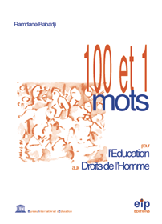

The meaning of the term “declaration” changes according to the context : it can be a text issued by an international organization or adopted at a diplomatic conference bringing together States and international organizations. Its authors use it to declare or reaffirm principles that they consider of paramount importance. A typical example is the Universal Declaration of Human Rights. We can also mention the Stockholm Declaration on the Environment (1972), the Rio de Janeiro Declaration on the Environment and Development (1992) and more recently the Declaration on the Principles of the Fundamental Right to Work, adopted by the International Labor Organization (1998). A Declaration is legally non-binding, however it can play a cardinal role in the creation of international custom.
The term “declaration” is also used to qualify the legally binding act by which a State recognizes the competence of a Committee to receive communications or complaints against it. This is the case with the Convention against Torture and Other Cruel, Inhuman or Degrading Treatment or Punishment, the International Convention on the Elimination of All Forms of Racial Discrimination and the International Covenant on Civil and Political Rights. Some of the other Conventions did not provide for this : the Convention on the Elimination of All Forms of Discrimination against Women, the Convention on the Rights of the Child and the International Covenant on Economic, Social and Cultural Rights.
In other Conventions, States can make a declaration by which they deny a particular Committee the right to take the initiative and address the violations of the Convention. This is the case with the Convention against Torture and the Optional Protocol to the Convention on the Elimination of All Forms of Discrimination against Women.
*See : Custom, International Law, International Organization, Recommendation.
